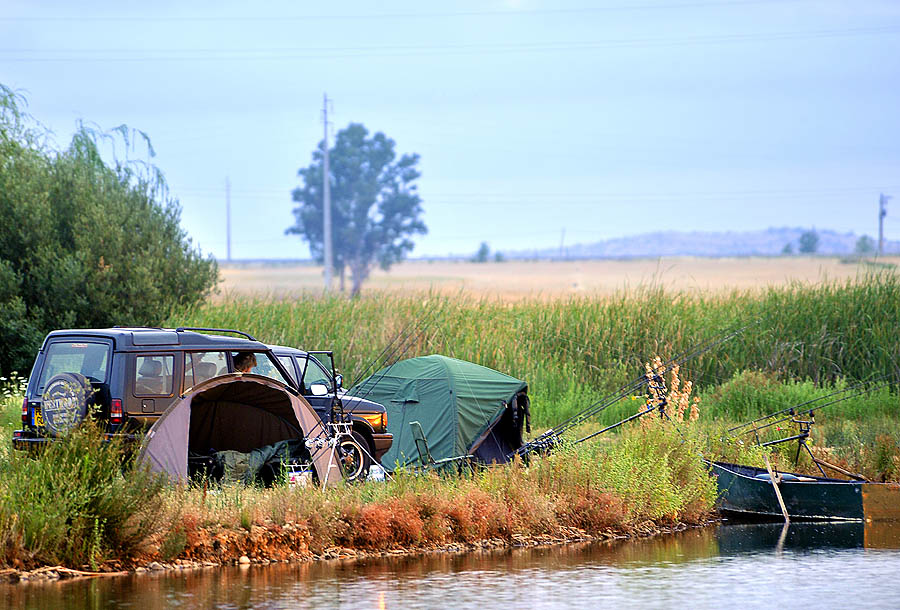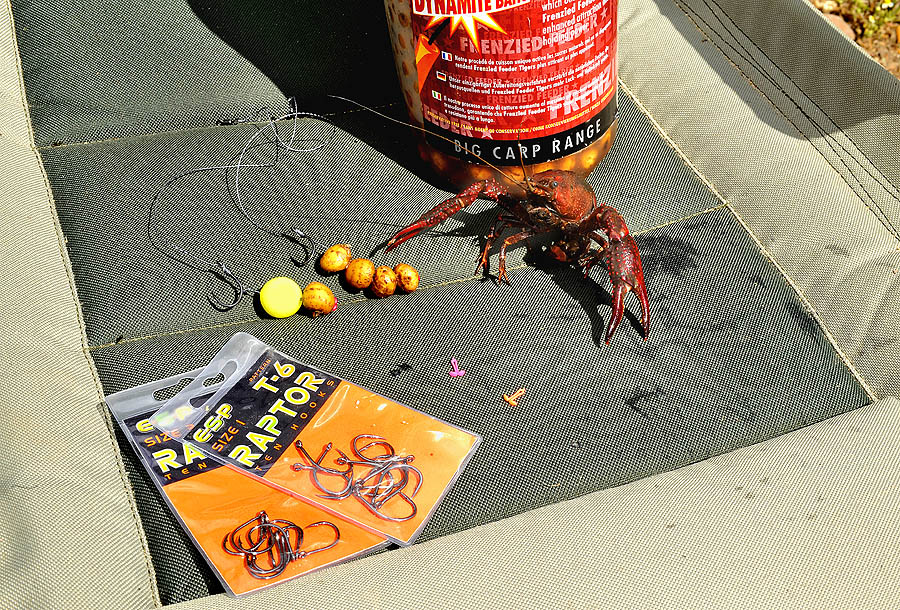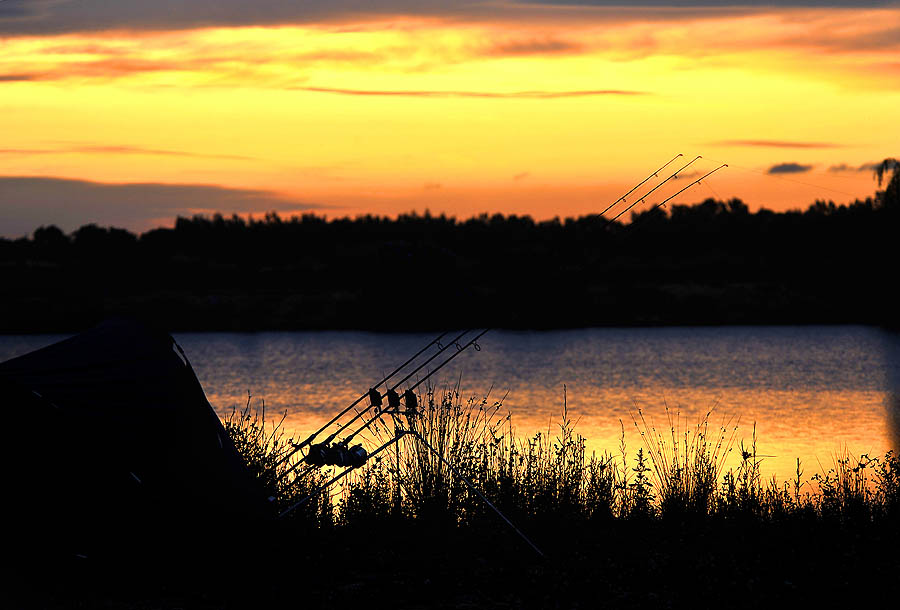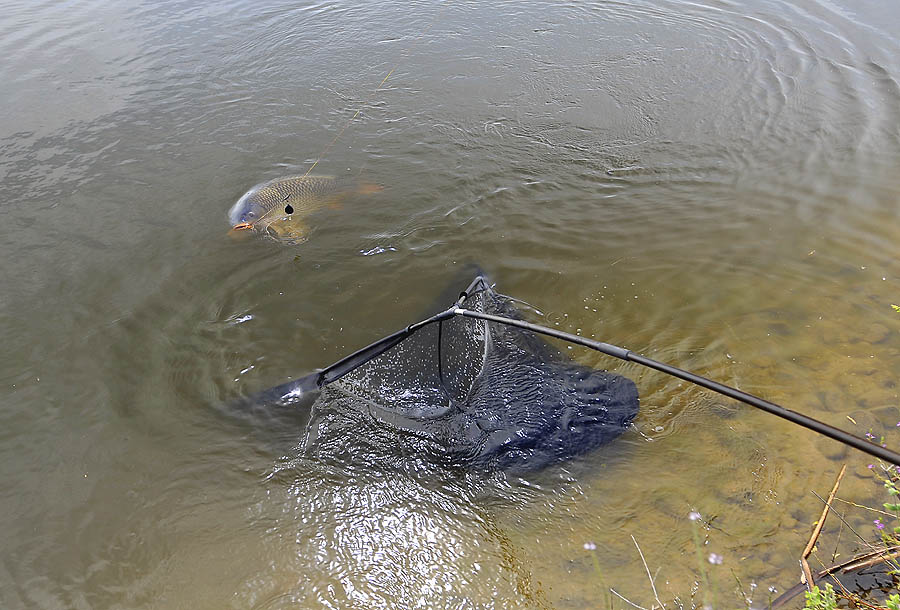 (2009) Big things are happening in the carp world. The current world record of 34.35 kg from France is in serious danger. There is no doubt that the Iberian Peninsula will be the new “carp Mecca” of Europe, a title which France has held for many years. Spanish carp anglers have “cracked” the big lakes, and they are fully on the level of both technically and with equipment as the rest of the European carp anglers.
(2009) Big things are happening in the carp world. The current world record of 34.35 kg from France is in serious danger. There is no doubt that the Iberian Peninsula will be the new “carp Mecca” of Europe, a title which France has held for many years. Spanish carp anglers have “cracked” the big lakes, and they are fully on the level of both technically and with equipment as the rest of the European carp anglers.
There are thousands of carp lakes in Spain and Portugal, and lakes like Orellana dwarf even the biggest French carp lakes. With such a potential, and with the talented and well equipped Spanish carp anglers, it is but a question of little time until the world record is broken.
I met with Peter Staggs at Lago da Alfarofia in Portugal, on invitation from the owner João Carlos. Alfarofia is actually a rice farm, near the charming village of Elvas, where there are still huge, ancient Roman aqueduct standing. Elvas and Alfarofia are very close to the Spanish border, and the city of Badajóz, and here the mighty Rio Guadiana constitutes the border between the two countries.
In 1991, João Carlos had the lake converted from a rice field to the existing commercial carp fishery, the first and only in Portugal. The 6 hectares lake was stocked with 1500 mirror carp at the time, and it wasn’t fished until early 2008, where the carp had reached astonishing weights. Other than the balmy climate, the carp thrive because of the constant circulation and oxygenation of the water, as the lake is still part of the overall watering system of the rice fields. On top of that, the lake sports a monstrous population of red swamp crayfish, which certainly helps keep the carp well nourished.
Today the old mirror carp weigh in excess of 30 kg, and their offspring, mainly common carp, weigh well over 20 kg. This little lake now holds the Portuguese carp record, and because of the huge success the lake has already proved, João Carlos is planning to convert even more rice fields into carp lakes.
 When we arrived at the lake there were already a couple of Spanish carp anglers fishing. Almost everywhere I go with Peter, people show up to meet him. Well, Peter is what you could call “the grand old man” of Spanish carp angling – he singlehandedly kick-started modern carp fishing on the Iberian Peninsula.
When we arrived at the lake there were already a couple of Spanish carp anglers fishing. Almost everywhere I go with Peter, people show up to meet him. Well, Peter is what you could call “the grand old man” of Spanish carp angling – he singlehandedly kick-started modern carp fishing on the Iberian Peninsula.
These Spanish carp anglers are part of a group calling themselves “Monster Carp”, and that name is certainly not without merit. They invited us the friend baby tench, which we politely declined – but a drink always goes down well, doesn’t it?
They showed us pictures and videos of their catches on their mobiles phones, and I nearly choked on the drink when I saw the results: in a week a couple of those guys had carp of 33½, 24, 22, 19 and quite a few between 15 and 18 kg. Well, I hadn’t got the Spanish all wrong, when I thought I heard them talk about small carp of 15-18 kg !!!
I fished with Peter for a week at Alfarofia. Peter caught a beautiful 20½ kg common carp, on top of the 21 kg he had recently caught there. For my part, I humiliated myself by catching 10 carp between 7 and 9 kg – an all time low for the lake, I believe. Well, I guess I will have to return and do better, then…
As benevolent the crayfish were to the growth of the carp, just as mindboggling irritating they were to the fishing – even the rock hard boilies were chewed down to nothing in a matter of hours. We had to fish with plastic boilies and tigernuts to keep our baits from devastation, besides which we ground baited with boiled hemp to keep the crayfish otherwise occupied.
Peter had told me about crayfish already, but I had no idea they could be so prolific and so bloody annoying. We did put them to good use however, as João Carlos invited us to a veritable cray-feast with Spanish omelet and salad. He told us that when the crayfish are at their peak he can put 40 cray-pots out for a week and harvest 800 kg of the little beasts.
 In daytime we explored the lakes and river of the area. River Guadiana is absolutely gorgeous, all places I have fished it, and it is certainly no different in this area. One day we went out on an old stone bridge, which was apparently bombed during one of the many historic conflicts between Spain and Portugal. From the bridge we could see a lot of fish, barbell and carp, foraging between the rocks. We spent some time trying to get in contact with the big comizo barbel, which are Europe’s biggest, but because they were spawning at the time, they showed no interest in our baits. The locals have caught the comizo to 15 kg, where we fished – so, next time!
In daytime we explored the lakes and river of the area. River Guadiana is absolutely gorgeous, all places I have fished it, and it is certainly no different in this area. One day we went out on an old stone bridge, which was apparently bombed during one of the many historic conflicts between Spain and Portugal. From the bridge we could see a lot of fish, barbell and carp, foraging between the rocks. We spent some time trying to get in contact with the big comizo barbel, which are Europe’s biggest, but because they were spawning at the time, they showed no interest in our baits. The locals have caught the comizo to 15 kg, where we fished – so, next time!
One day, we were invited by Antonio (the guy with the fried baby tench) to visit him at his work, which is the Guadiana Aquarium in Badajóz. The aquarium is open to the public, but it also functions as a research facility, hatchery and fishing school.
So, we found out where Antonio’s little tench came from, hmm…
